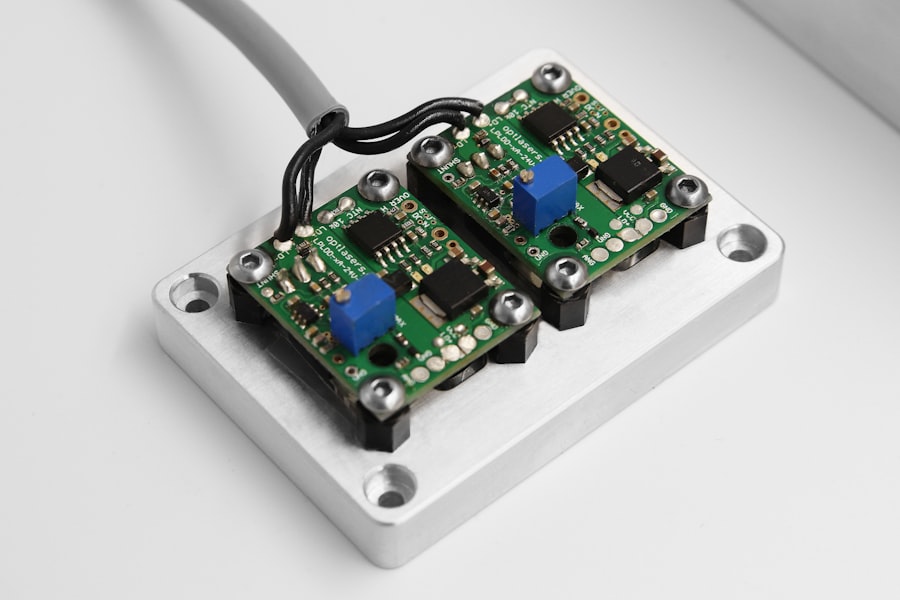Laser hair removal has become a popular choice for those seeking a long-term solution to unwanted hair. If you’ve ever found yourself frustrated with the constant upkeep of shaving or the discomfort of waxing, you might be considering this innovative method. The procedure involves using concentrated beams of light to target hair follicles, effectively reducing hair growth over time.
Unlike traditional methods, which only remove hair temporarily, laser hair removal offers a more permanent solution, making it an appealing option for many. As you delve deeper into the world of laser hair removal, it’s essential to understand its growing popularity. Many individuals are drawn to the convenience and efficiency it offers.
With just a few sessions, you can achieve smoother skin without the hassle of regular shaving or painful waxing appointments. This method not only saves time but also reduces the risk of ingrown hairs and skin irritation that often accompany other hair removal techniques. By understanding the fundamentals of laser hair removal, you can make an informed decision about whether it’s the right choice for you.
Key Takeaways
- Laser hair removal is a popular method for long-term hair reduction that uses concentrated light to target hair follicles.
- The procedure works by damaging the hair follicle to inhibit future hair growth, resulting in smoother skin.
- The benefits of laser hair removal include precision, speed, and long-lasting results compared to traditional hair removal methods.
- Different types of lasers, such as Alexandrite, Diode, and Nd:YAG, are used for laser hair removal, each with its own advantages and considerations.
- Before undergoing laser hair removal, it is important to avoid sun exposure, waxing, and plucking to ensure the best results and minimize potential risks and side effects.
How Laser Hair Removal Works
How Laser Hair Removal Works
The precision of the laser allows it to target only the hair, leaving the surrounding skin unharmed. During treatment, the laser is applied to the area being treated in a series of pulses. You may feel a slight tingling sensation or a rubber band snap against your skin, but most people find the discomfort manageable.
Factors Affecting Treatment
The number of sessions required for optimal results varies depending on factors such as hair color, skin type, and the area being treated. Multiple sessions are typically necessary to achieve optimal results, as hair grows in different cycles, and the laser is most effective on hair in the active growth phase.
Achieving Optimal Results
By understanding the science behind laser hair removal and how it works, you can achieve optimal results with this safe and effective treatment option.
The Benefits of Laser Hair Removal

One of the most significant advantages of laser hair removal is its long-lasting results. Unlike shaving or waxing, which require frequent maintenance, laser treatments can lead to permanent hair reduction after a series of sessions. This means less time spent on grooming and more freedom to enjoy your daily activities without worrying about unwanted hair.
Additionally, many individuals report that their skin feels smoother and softer after undergoing laser treatments, enhancing their overall confidence. Another benefit worth considering is the reduction in skin irritation and ingrown hairs that often accompany traditional hair removal methods. Shaving can lead to razor burn, while waxing can cause redness and discomfort.
With laser hair removal, you can minimize these issues and enjoy a more comfortable experience. Furthermore, the procedure is quick and efficient; many sessions can be completed in under an hour, making it easy to fit into your busy schedule.
The Different Types of Lasers Used
| Laser Type | Application | Wavelength | Power Output |
|---|---|---|---|
| Gas Lasers | Medical, industrial, scientific | Visible and infrared | Low to high power |
| Solid State Lasers | Material processing, medical, defense | Visible, ultraviolet, infrared | Low to high power |
| Semiconductor Lasers | Telecommunications, barcode readers, laser pointers | Visible and infrared | Low to medium power |
| Fiber Lasers | Material processing, telecommunications | Infrared | Low to high power |
When it comes to laser hair removal, not all lasers are created equal. Various types of lasers are designed to cater to different skin types and hair colors. The most commonly used lasers include Alexandrite, Diode, and Nd:YAG lasers.
Each type has its unique characteristics and advantages, making it essential to consult with a qualified professional who can recommend the best option for your specific needs. The Alexandrite laser is known for its speed and effectiveness on lighter skin tones with dark hair. It operates at a wavelength that allows for quick treatments while providing excellent results.
On the other hand, the Diode laser is versatile and can be used on a broader range of skin types, including darker skin tones. Lastly, the Nd:YAG laser is particularly effective for individuals with darker skin or coarse hair, as it penetrates deeper into the skin without causing damage to the surface. Understanding these differences can help you make an informed choice when selecting a clinic for your treatment.
Preparing for Laser Hair Removal
Preparation is key to ensuring a successful laser hair removal experience. Before your first appointment, it’s crucial to schedule a consultation with your chosen provider. During this meeting, you’ll discuss your medical history, any medications you’re taking, and your specific goals for treatment.
This information will help your provider tailor the procedure to your needs and ensure that you’re a suitable candidate for laser hair removal. In the weeks leading up to your treatment, there are several steps you should take to prepare your skin. Avoid sun exposure as much as possible, as tanned skin can increase the risk of complications during the procedure.
Additionally, refrain from waxing or plucking hairs in the treatment area for at least four weeks prior to your appointment; this allows the laser to target the hair follicles effectively. Shaving is typically recommended just before your session to ensure that the laser can focus on the follicle without interference from longer hairs.
What to Expect During the Procedure

When you arrive for your laser hair removal appointment, you’ll likely be asked to wear protective eyewear to shield your eyes from the laser light.
As the laser is activated, you may feel a sensation similar to a rubber band snapping against your skin; however, many modern lasers come equipped with cooling mechanisms that help minimize discomfort.
The duration of your session will depend on the size of the area being treated. Smaller areas like the upper lip may take only a few minutes, while larger areas like the legs or back could take up to an hour or more. After completing the treatment, your provider may apply a soothing lotion or gel to help calm any redness or irritation that may occur post-procedure.
You’ll leave with clear instructions on how to care for your skin in the days following your session.
Aftercare and Maintenance
After undergoing laser hair removal, proper aftercare is essential for achieving optimal results and minimizing any potential side effects. In the days following your treatment, it’s important to avoid sun exposure and tanning beds, as your skin may be more sensitive than usual. Applying sunscreen with a high SPF is crucial if you need to be outdoors.
Additionally, refrain from using harsh skincare products or exfoliants on the treated area until your skin has fully healed. You may notice some redness or swelling in the treated area after your session; this is normal and should subside within a few hours to a couple of days. If you experience any discomfort, over-the-counter pain relievers can help alleviate it.
Your provider will likely schedule follow-up appointments every few weeks or months based on your individual treatment plan to monitor progress and determine if additional sessions are necessary.
Potential Risks and Side Effects
While laser hair removal is generally considered safe, it’s essential to be aware of potential risks and side effects associated with the procedure. Some individuals may experience temporary redness or swelling in the treated area, which usually resolves quickly. In rare cases, more severe side effects such as blistering or changes in skin pigmentation can occur, particularly in individuals with darker skin tones or those who do not follow pre- and post-treatment care instructions.
To minimize risks, it’s crucial to choose a qualified provider with experience in laser hair removal. They should conduct a thorough consultation and assess your skin type and medical history before proceeding with treatment. By understanding both the benefits and potential risks associated with laser hair removal, you can make an informed decision that aligns with your personal goals for smooth, hair-free skin.
If you are interested in learning more about laser hair removal, you may want to check out the article on Understanding the Benefits of Laser Hair Removal. This article provides valuable information on the advantages of laser hair removal and how it can be a more effective and long-lasting solution compared to traditional hair removal methods.
FAQs
What is laser hair removal?
Laser hair removal is a cosmetic procedure that uses a concentrated beam of light (laser) to remove unwanted hair. The laser targets the pigment in the hair follicle, damaging it and inhibiting future hair growth.
How does laser hair removal work?
During laser hair removal, the laser emits a light that is absorbed by the pigment (melanin) in the hair follicles. The heat from the laser damages the hair follicle, inhibiting future hair growth.
Is laser hair removal permanent?
Laser hair removal can lead to long-term hair reduction, but it is not always permanent. Some hair may grow back, but it is often finer and lighter in color.
What areas of the body can be treated with laser hair removal?
Laser hair removal can be used to treat unwanted hair on the face, legs, arms, underarms, bikini line, and other areas of the body.
Is laser hair removal safe?
When performed by a qualified and experienced professional, laser hair removal is generally considered safe. However, there are some risks, including skin irritation, pigment changes, and rare cases of scarring.
How many sessions are needed for laser hair removal?
The number of sessions needed for laser hair removal varies depending on the individual and the area being treated. Most people require multiple sessions, typically spaced several weeks apart, to achieve the desired results.
Who is a good candidate for laser hair removal?
Laser hair removal is most effective for individuals with light skin and dark hair, as the laser targets the pigment in the hair follicle. However, advancements in technology have made it possible for individuals with a wider range of skin and hair colors to undergo laser hair removal.






